Navigating SMS terms and conditions: A business owner’s guide + template to ensure compliance
The call to action to join your SMS subscriber list must include terms and conditions. This can be the full text or a link to the terms and conditions in full.
As a business owner using text or SMS messaging, several organizations and laws require you to have a terms and conditions document in the call to action to opt into to your text list. Your texting terms and conditions document sets expectations and guidelines for your contacts’ SMS interactions with your business.
If your SMS service were a country, the terms and conditions document is the constitution.
How, though, do you create an SMS terms and conditions document for business texting? And why is it crucial to have one?
This guide will answer your questions and show real-life examples of text messaging terms and conditions that can inspire you. You’ll also get a template to help you get started.
⚠️ This advice is for informational purposes only and is neither intended as nor should be substituted for consultation with appropriate legal counsel and/or your organization’s regulatory compliance team.
What are SMS compliance terms and conditions?
SMS terms and conditions are a legally binding contract that sets the rules and guidelines for an SMS or texting campaign, including the service providers’ and customers’ responsibilities.
These terms and conditions set the tone for the relationship between you, running an SMS campaign, and your contacts, receiving your messages.
Other phrases that can be used interchangeably to describe terms and conditions are “terms of service” and “terms of use.”
For an SMS terms and conditions document to be legally binding, contacts must understand what it means before accepting to sign it. It must also be legally valid in your territory or country.
What must your SMS compliance terms and conditions include?
While there’s no one-size-fits-all format for texting terms and conditions documents, it should include some key components.
Here are the mandatory elements you must include in your SMS compliance terms and conditions.
Note: SimpleTexting automatically generates a terms and conditions document for you when you use our provided Web Forms (so you don’t need to do this yourself — we got you). However, if you collect contacts through other opt-in methods, you’ll need to include a link to these terms and conditions.
The opt-in call to action must include your complete terms and conditions or a link to them
According to the Cellular Telecommunications Industry Association (CTIA) short code monitoring handbook, you’re expected to provide a link to your complete terms and conditions under the opt-in call to action.
Here’s an example of what that might look like.
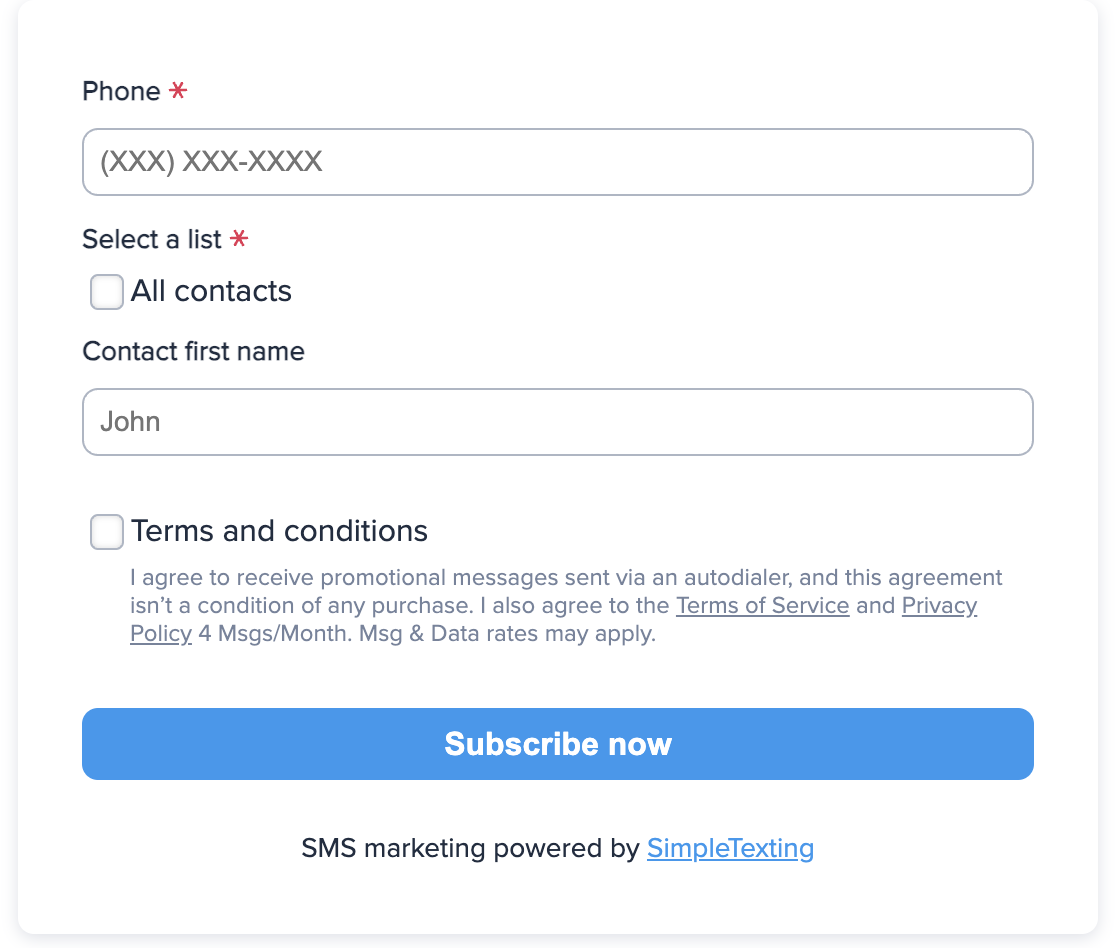
Program name and product description
The CTIA requires that your terms and conditions contain a program name, which is often your brand or product name.
“The program name is the sponsor of the Short Code program, often the brand name or company name associated with the Short Code. The product description describes the product advertised by the program.”
Message frequency
Mention the number of messages your contacts can expect to receive from you.
Link to customer support
Include a link to customer support so your contacts can reach out if they need help with anything.
How to opt-out
Explain how your customers can opt out of receiving your SMS marketing messages.
Costs
Mention the costs or fees a customer might incur if they send messages to you. This is usually known as “message and data rates may apply” disclosure.
Details about abandoned cart messages
Let your contacts know if your campaign will include you sending abandoned cart messages.
Link to privacy policy
Add a privacy policy link so your contacts know how you collect, store, and use their data.
How to find your terms and conditions link in SimpleTexting
SimpleTexting provides a standard terms and conditions document for its customers. This section will show you what that looks like in the Web Forms feature.
You can use this process to copy the link and paste it in your custom forms, if applicable, to make sure you remain compliant. Or you could copy/paste and modify the SMS compliance terms and conditions language provided here within your website’s comprehensive terms and conditions.
Again, we’re not your lawyers, so we highly recommend seeking legal counsel before starting your SMS program and modifying items as important as your terms and conditions.
- Click on “Apps” from your SimpleTexting dashboard. Then, click on “Web Sign-Up Forms.”

- Create a new form if you don’t already have one. Once you’ve created a form, click on “Get code.”

- Copy the link code.
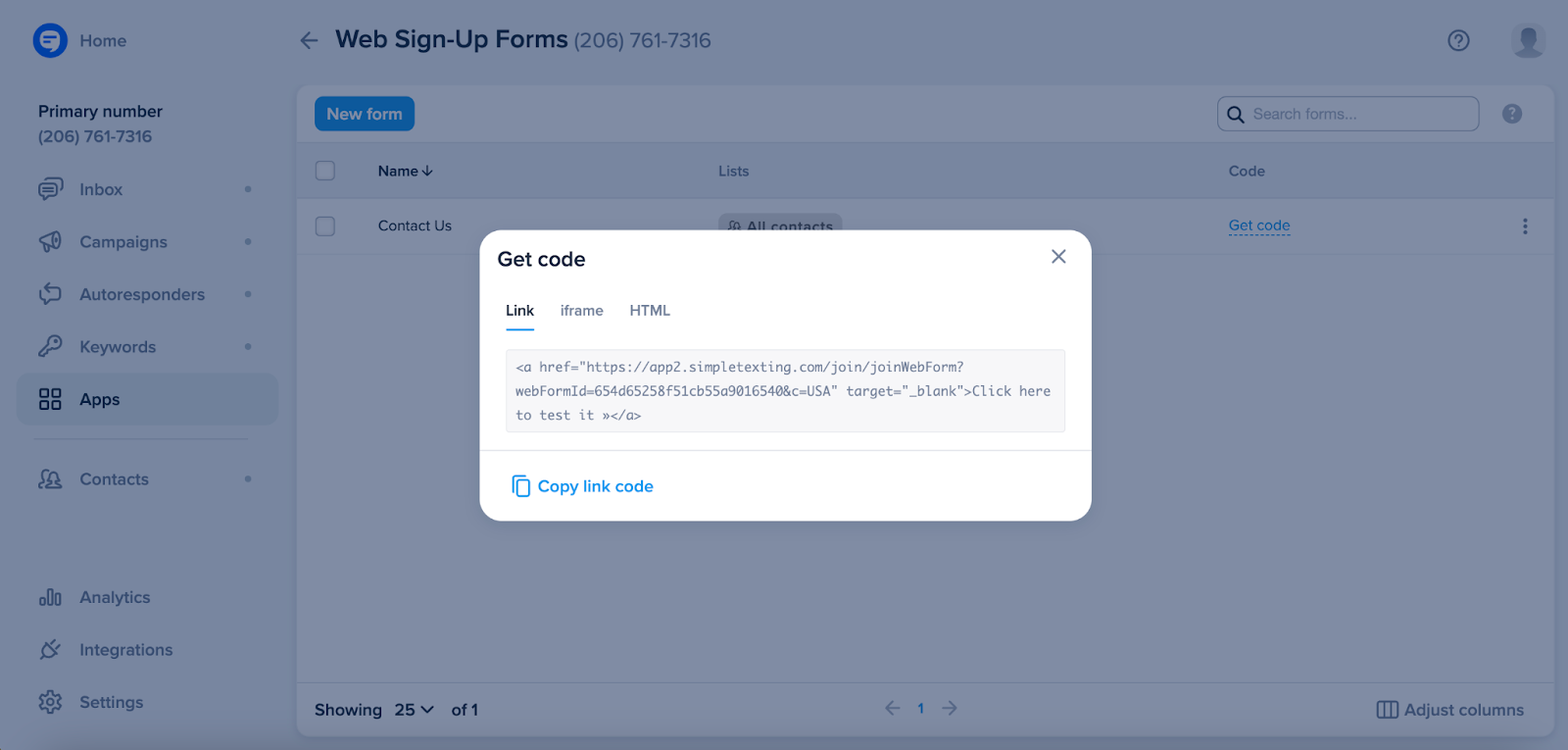
- Add the form’s embed code where you want on your site.

- Contacts can now see your terms and conditions whenever they click the link.
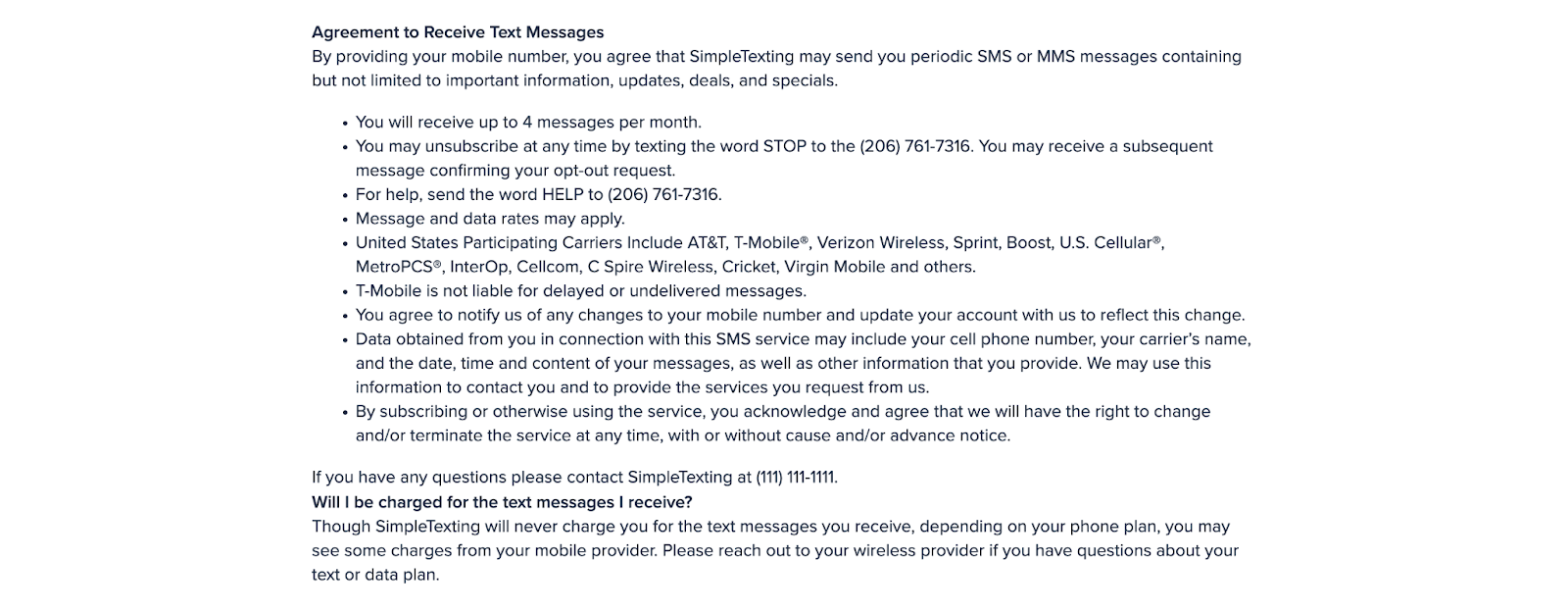
5 SMS compliance terms and conditions examples
Looking for some real-life SMS compliance terms and conditions examples? Here are some.
1. Athletic Brewing SMS terms and conditions example
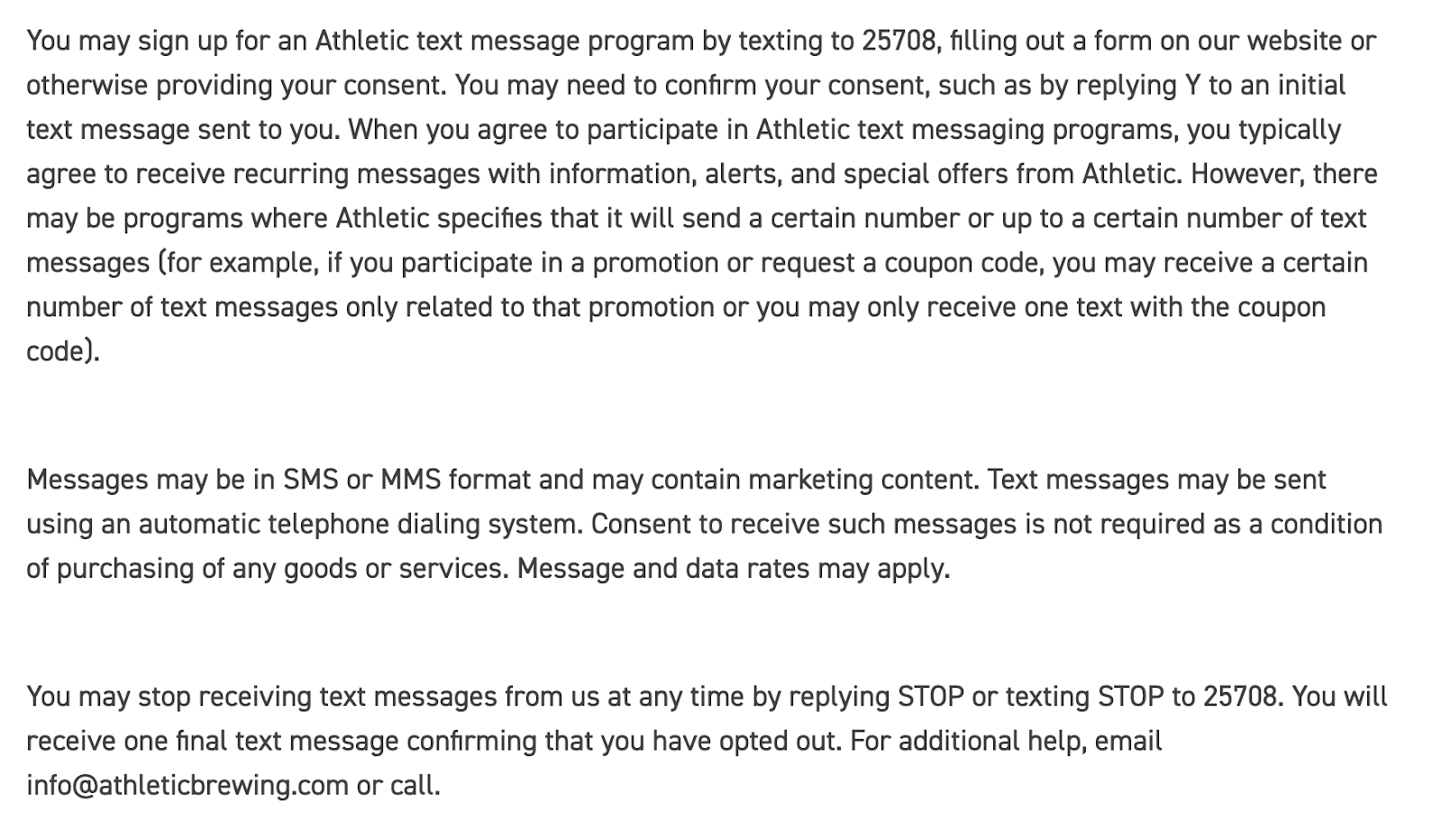
2. Bombas SMS terms and conditions example
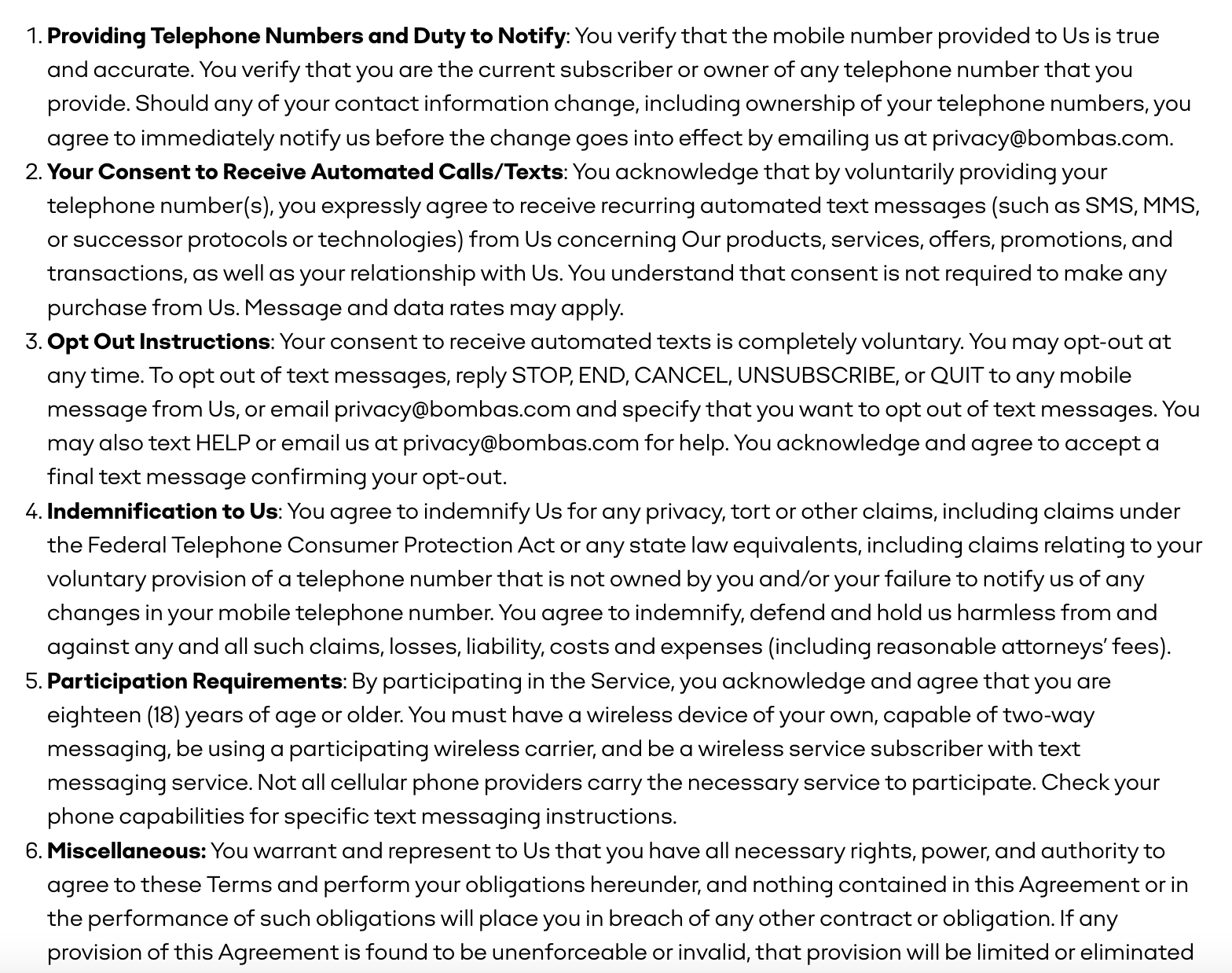
3. Stonewood Grill & tavern terms and conditions example
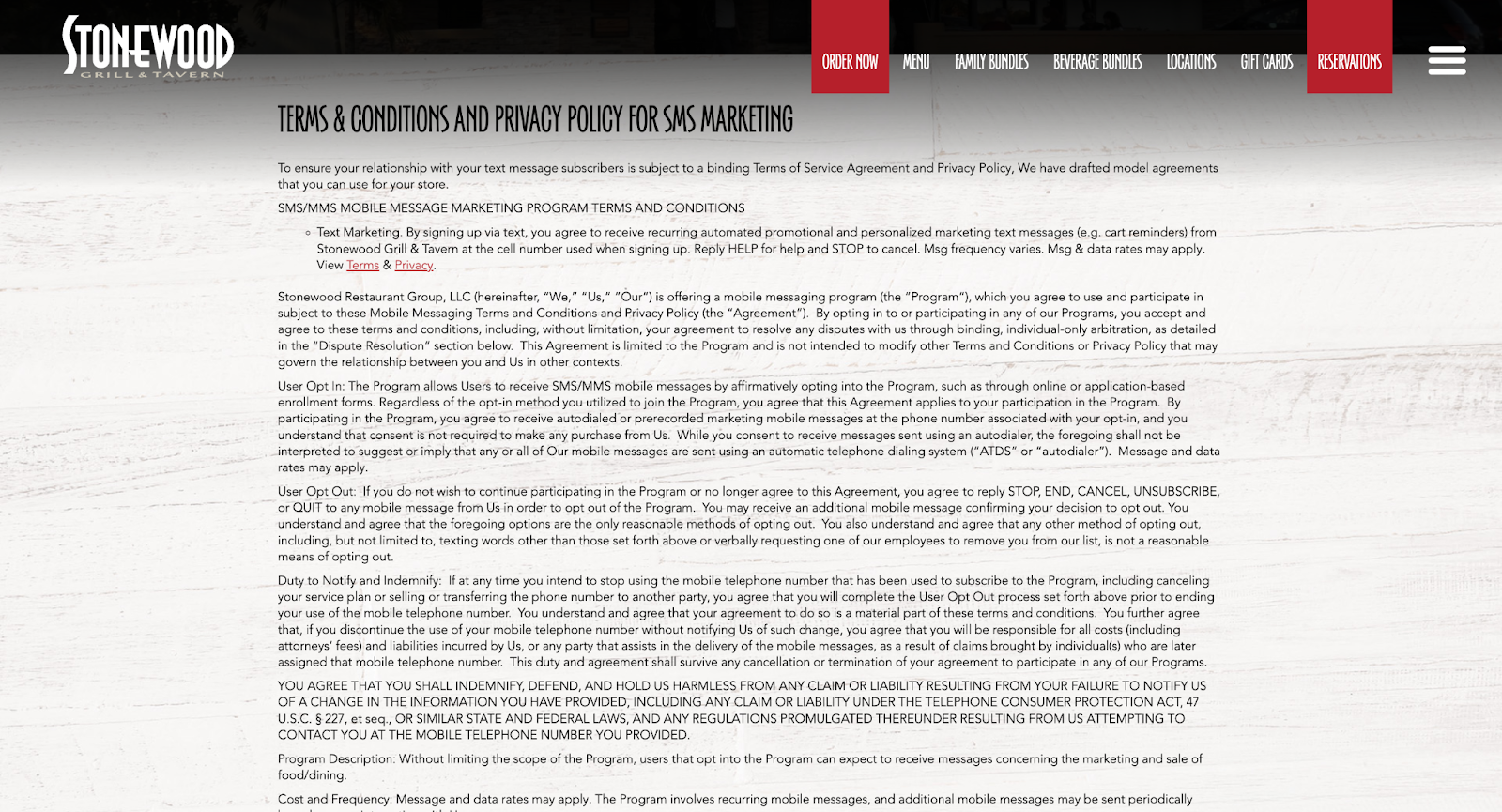
4. Petco SMS terms and conditions example
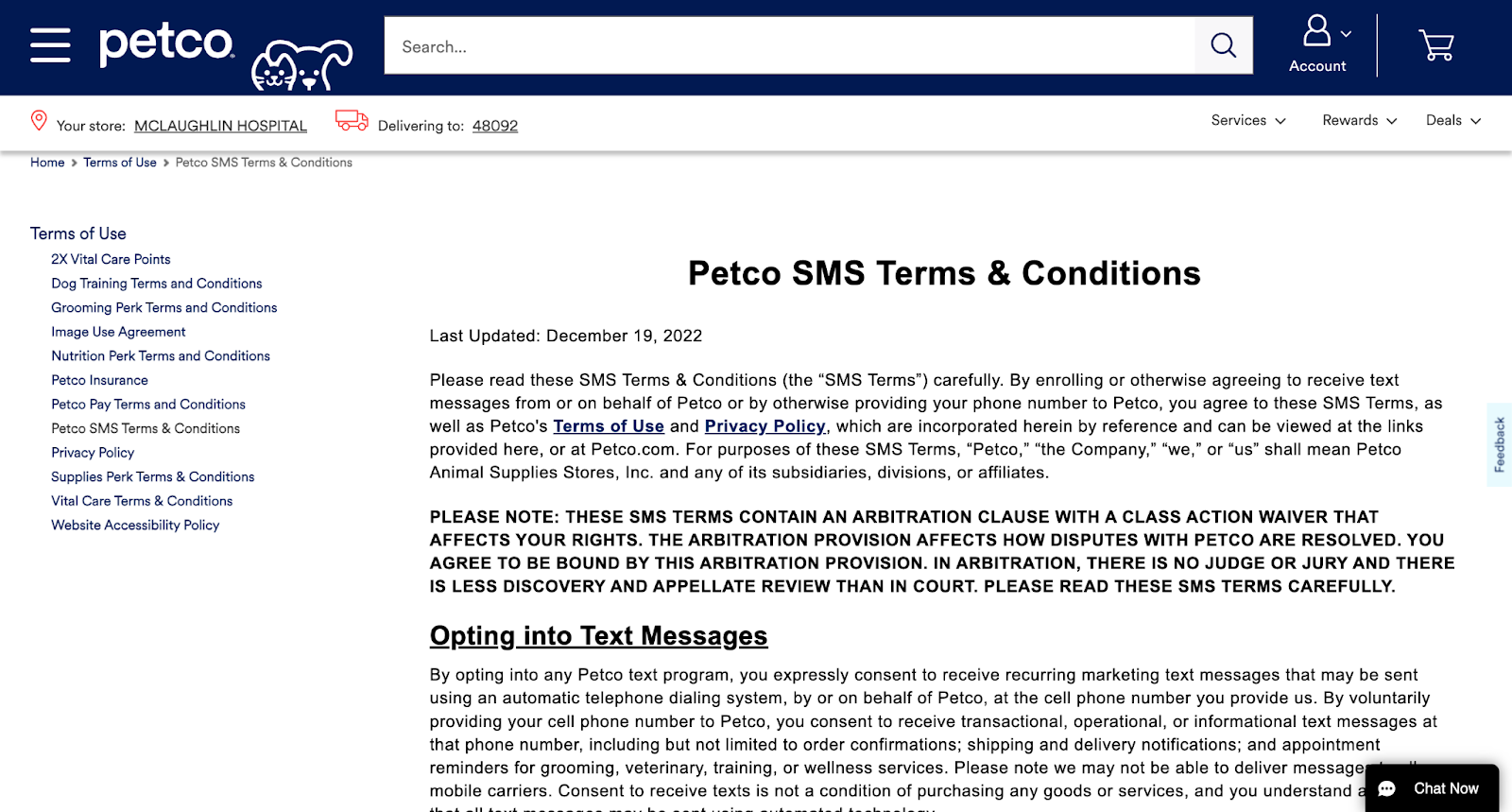
5. Caterpillar SMS terms and conditions
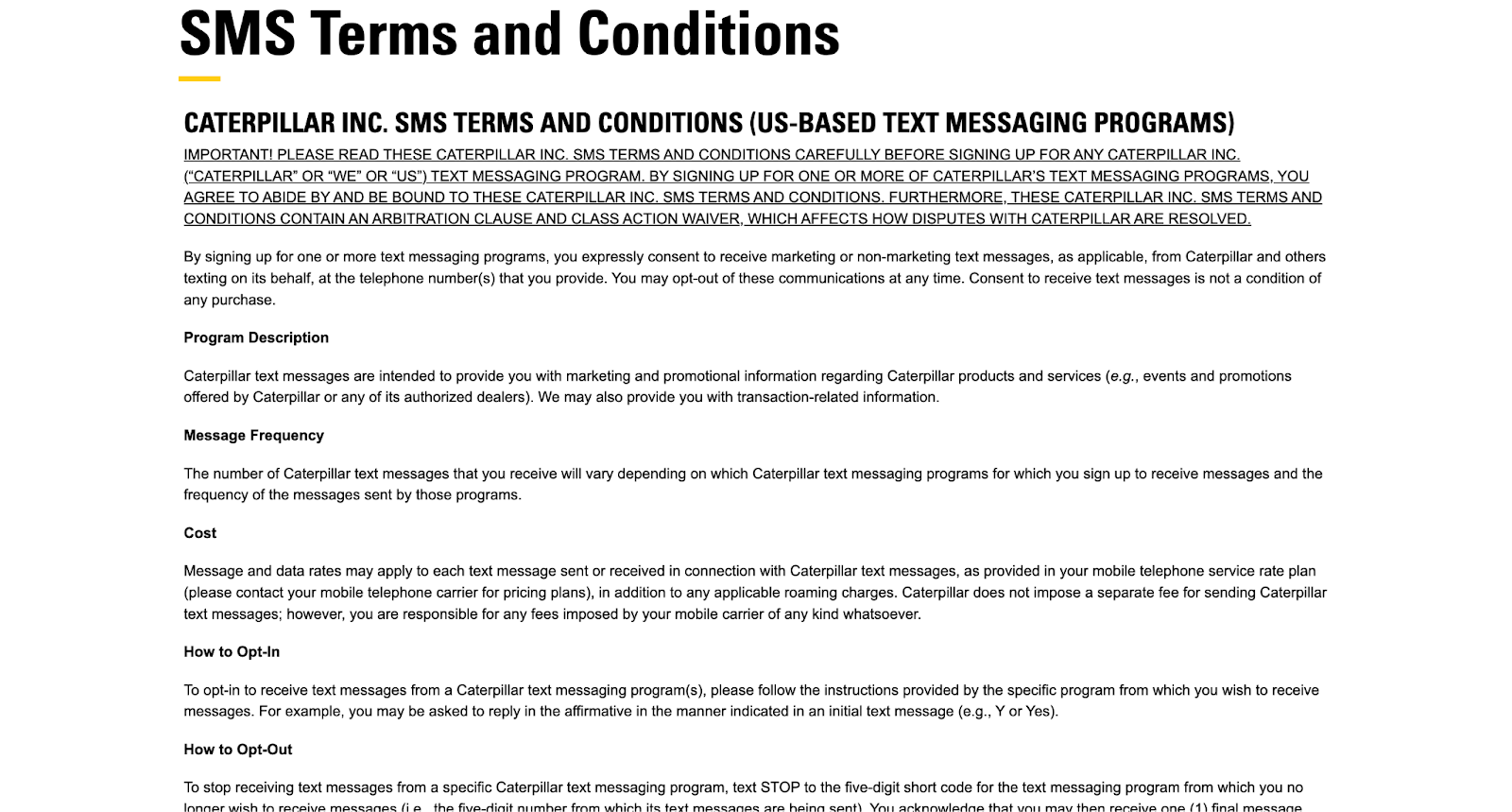
SMS compliance terms and conditions template
Here’s a link to an example terms and conditions document. This example is what your audience would see if they clicked from the SimpleTexting web form to subscribe to your program.
Why are SMS terms and conditions vital?
Here are some reasons to have an SMS terms and conditions doc before you start collecting contacts.
1. To remain compliant
As mentioned earlier, several organizations and laws require you to have terms and conditions. Creating one helps you stay compliant and avoid trouble with the law.
2. To establish expectations
Your terms and conditions should explicitly include your SMS marketing practices. That way, customers know what to expect before accepting your terms and conditions.
You can set expectations around the frequency of messages, how customers can opt-out from receiving your messages, possible fees, and other details.
3. To limit liabilities
When customers are unhappy with your message or its delivery, you’ll have more protection from liabilities if you have a terms and conditions agreement than when you don’t.
A warranty disclaimer, if included in your terms and conditions agreement, also limits your liabilities if your SMS marketing messages are found to be erroneous.
4. To protect your content
A terms and conditions agreement protects your content and ensures that customers cannot claim your images, videos, and other forms of media as theirs.
The agreement informs customers that intellectual property laws protect your content.
5. To instill trust
When customers know how you operate, thanks to the terms and conditions agreement, they’ll tend to trust you more.
Key takeaways
- Ensure that the disclosure of the terms and conditions are clearly displayed.
- Use simple, everyday language that your average contact would understand.
⚠️ This advice is for informational purposes only and is neither intended as nor should be substituted for consultation with appropriate legal counsel and/or your organization’s regulatory compliance team.
Nathan Ellering contributed to this piece.